- Home
- Rabindranath Tagore
He (Shey)
He (Shey) Read online
Contents
TRANSLATOR’S NOTE
INTRODUCTION
1
2
3
4
5
6
7
8
9
10
11
12
13
14
Rabindranath Tagore wrote He (Shey) to satisfy his nine-year-old granddaughter’s incessant demands for stories. Even as Tagore began to create his grand fantasy, he planned a story that had no end, and to keep the tales spinning he employed the help of ‘Shey’ (He), a ‘man constituted entirely of words’ and rather talented at concocting tall tales.
So we enter the delightful world of Shey’s extraordinary adventures. In it we encounter a bizarre cast of characters (the ganja-addict Patu whose body He inhabits after losing his own in a pond, a misdirected jackal who aspires to be human, the snuff-sniffing scientists of Hoonhau Island and the New Age poets of the Hoi! Polloi Club dedicated to the cause of tunelessness); grotesque creatures like the Gandishandung and Bell-Ears; comic caricatures of contemporary figures and events, as well as mythological heroes and deities—all brought to life through a sparkling play of words and illustrations in Tagore’s unique style.
In this first-ever complete translation of Shey, including Tagore’s delightful nonsense verse, Aparna Chaudhuri brilliantly captures the spirit and flavour of the original.
Translated by APARNA CHAUDHURI
‘On reading [Shey], I find it is not just for children but for the eternal child. Those for whom you have written it will never cease to be children’
Banaphul, in a letter to Tagore
Cover illustration by Rabindranath Tagore
MODERN CLASSICS
Fiction/Translation
www.penguinbooksindia.com
PENGUIN BOOKS
HE
RABINDRANATH TAGORE was born in 1861. He was the fourteenth child of Debendranath Tagore, head of the Brahmo Samaj. The family house at Jorasanko was a hive of cultural and intellectual activity and Tagore started writing at an early age. In the 1890s he lived in rural East Bengal, managing family estates. He was involved in the Swadeshi campaign against the British in the early 1900s. In 1912 he travelled to England with Gitanjali, a collection of English poems, and won the Nobel Prize for Literature in 1913. Tagore was knighted in 1915, an honour he repudiated in 1919 after the Jallianwala Bagh massacre. In the 1920s and 1930s he lectured extensively in America, Europe, the Far East and Middle East. Proceeds from these and from his Western publications went to Visva-Bharati, his school and university at Shantiniketan. Tagore was a prolific writer; his works include poems, novels, plays, short stories, essays and songs. Late in his life Tagore took up painting, exhibiting in Moscow, Berlin, Paris, London and New York. He died in 1941.
APARNA CHAUDHURI is in her final year at Calcutta Girls’ High School.
Copyright
Published by the Penguin Group
Penguin Books India Pvt. Ltd, 11 Community Centre, Panchsheel Park, New Delhi 110 017, India
Penguin Group (USA) Inc., 375 Hudson Street, New York, New York 10014, USA
Penguin Group (Canada), 90 Eglinton Avenue East, Suite 700, Toronto, Ontario, M4P 2Y3, Canada (a division of Pearson Penguin Canada Inc.)
Penguin Books Ltd, 80 Strand, London WC2R 0RL, England
Penguin Ireland, 25 St Stephen’s Green, Dublin 2, Ireland (a division of Penguin Books Ltd)
Penguin Group (Australia), 707 Collins Street, Melbourne, Victoria 3008, Australia (a division of Pearson Australia Group Pty Ltd)
Penguin Group (NZ), 67 Apollo Drive, Rosedale, Auckland 0632, New Zealand (a division of Pearson New Zealand Ltd)
Penguin Group (South Africa) (Pty) Ltd, Block D, Rosebank Office Park, 181 Jan Smuts Avenue, Parktown North, Johannesburg 2193, South Africa
Penguin Books Ltd, Registered Offices: 80 Strand, London WC2R 0RL, England
First published by Penguin Books India 2007
www.penguinbooksindia.com
Translation and Translator’s Note copyright © Aparna Chaudhuri 2007
Introduction copyright © Sankha Ghosh 2007
Illustrations by Rabindranath Tagore
All rights reserved
ISBN: 978-0-14310-209-0
This Digital Edition published in 2010.
e-ISBN: 978-8-18475-095-9
Digital conversion prepared by DK Digital Media, India.
This book is sold subject to the condition that it shall not, by way of trade or otherwise, be lent, resold, hired out, or otherwise circulated without the publisher’s prior written consent in any form of binding or cover other than that in which it is published and without a similar condition including this condition being imposed on the subsequent purchaser and without limiting the rights under copyright reserved above, no part of this publication may be reproduced, stored in or introduced into a retrieval system, or transmitted in any form or by any means (electronic, mechanical, photocopying, recording or otherwise), without the prior written permission of both the copyright owner and the above-mentioned publisher of this book.
TRANSLATOR ’S NOTE
A child comes to me and commands me to tell her a story. I tell her of a tiger which is disgusted with the black stripes on its body and comes to my frightened servant demanding a piece of soap. The story gives my little audience immense pleasure, the pleasure of a vision, and her mind cries out, ‘It is here, for I see!’ She knows a tiger in the book of natural history, but she can see the tiger in the story of mine.
—Rabindranath Tagore, The Religion of Man
I first read Shey1 when I was ten years old. In retrospect, I think the idea of translating it grew out of a desire to enter more actively into the text and the characters; at the time, it was just something to keep me occupied during a long summer vacation. I approached the translation in no very purposeful spirit—the first draft contained more doodles than writing and was frequently buried under novels, school work and anything else that happened to engage my attention. Done in occasional spurts, the work took longer than it might otherwise have. I changed my mind about almost every sentence, and when, some years later, I completed the translation, I could hardly remember what it was like when I began.
Both while reading Shey and translating it I had to keep in mind that the story was originally told and not written (at least, that is the impression sought to be conveyed). Like all told stories, it evolved through its telling—the ideas are dependent on the words, just as the words are fitted to the ideas. As a reader, I enjoyed this exchange between word and meaning—as a translator, I recognized it as a problem. The hero of Tagore’s story is introduced as ‘a man constituted entirely of words’. As a translator, I had to create the same man in a different idiom—to tell the same story, but in different words. This search for different words led me to the accidental discovery of many different meanings of the original words; while exploring the linguistic possibility of translation, I was led also to explore different analytic and imaginative possibilities inherent in the original work. Not all these possibilities can be fulfilled, or even conveyed, through translation—they can, however, considerably enrich one’s reading of Shey. They also make translation of a work like this, more than of any other kind, an imaginative rather than a purely linguistic exercise. If Shey is to make sense (or nonsense) in any language other than its original Bengali, merely finding the closest linguistic equivalents in that language is patently not enough to achieve that aim.
At the same time, Shey is very much a modern fantasy, part of a universal more-than-real. Like Carroll in Alice’s Adventures in Wonderland or Antoine de Saint-Exupéry in The Little Prince, Tagore taps a vein of the purest whimsy that make
s Shey a fantasy on the grand scale. Even the local or regional references retain their effect in translation, because they have become components of a fantasy world. At the same time, the colloquial language, the frequent play on words, and the caricatures of the heroes and deities of Indian mythology cannot quite keep their original flavour. I only hope this does not materially lessen their fun.
Happily, the sketches Tagore drew to illustrate Shey require no translation, and, therefore, run none of the risks of the text. Yet, at best, they only aid the imagination of the reader, who remains perfectly free to picture Shiburam or Puttulal or the Gandishandung as he or she pleases. In the last chapter, the writer discusses the ‘Age of Truth’ with young Sukumar and Pupe, when people will know by being, rather than touching or seeing:
Sukumar spoke. ‘It’s fun to think of you spreading over trees and brooks and becoming part of them. Do you think the Age of Truth will ever come?’
‘Till it does, we have paintings and poems. They are wonderful paths down which you can forget yourself and become other things.’
Perhaps the sketches are only the story-maker’s way of becoming the story.
This idea of ‘becoming the story’ is central to Shey, a story named after its hero, a man who bears no more distinguished a name than the Bengali third person pronoun (which I have translated as ‘He’). We are told that He helps the writer to make up the story: ‘I employed another man to help me, and you will know more about him later.’ Yet He is undeniably part of the story himself. The story-creator becomes the story’s most integral element—a truth behind all stories, but seldom so apparent as in Shey. So that the story should include all possible elements, the story-creator does not possess the distinction of a name. His identity and character remain undefined, for to define them would be to limit them—to include him in the unmysterious intimacy of ‘youand-me’ when his function is to represent the unknown and exciting ‘them’. The ordinary thus becomes the extraordinary, and the ordinary man a creature of untrammelled, whimsical fantasy.
It is this differently fantastic quality that makes translating Shey difficult. The language, in itself, is simple, the style easy and conversational, the incidents amusing, even if the ideas, sometimes quite visionary, may seem strange material for a story intended for a nine-year-old. The later episodes give narrative expression to Tagore’s thoughts on education, ethics, philosophy and similar subjects that one would not have thought conducive to storytelling. But we must remember that ‘in this story of mine, there is no trace of what people usually call a story’. Instead, the very process of story-making is visible and active and, indeed, what the story is really about.
Over five years, as the translation progressed, I grew closer to the story. In fact, I grew with it—or, at any rate, with the person it was originally intended for, Tagore’s granddaughter, Nandini (Pupe), the adopted daughter of his son Rathindranath. The first stories about He are, therefore, closer to young Pupe’s experience of people and their familiar activities. The ‘Shey’ of the first stories is, in the writer’s own words, ‘a very ordinary man. He eats, sleeps, goes to the office and is fond of the cinema. His story lies in what everyone does every day.’ No sooner does he enter the story than he makes the endearing confession that he is very hungry, and, as Tagore himself points out, it is easy to make friends with a hungry man. All elements of conventional fantasy are strongly suppressed—there is nothing wonderful or magical about this man, and yet he is to help create a story ‘about something quite extraordinary…without head or tail, rhyme or reason, sum or substance, just as we please’. Obviously, the idea is to rearrange the elements of ordinary reality into an extraordinary expression of the more-than-real. It is this more-than-real that we actually experience— Pupe asking for a story ‘sees’ the tiger in it because the tiger is part of the more-than-real.
Language is not a very important part of this more-than-real, which, paradoxically, makes it difficult to translate. Words are essential to it, but not in their strictly functional capacity of conveying meaning. They become important in themselves—because of how they sound, an inner rhythm or associated image. It is impossible to find a word in a different language identical to the first in meaning, effect and association. At least one of the three factors had to be sacrificed, to avoid every second word being in italics. I faced the greatest difficulty in the twelfth chapter, in which entire poems grow out of just such single, central words.
The part of Shey I most enjoyed reading was the poetry. It was also the part I most enjoyed translating. There are two chief sets of poems (not counting stray verses embedded in the text): the ‘tiger poems’ and the ‘tuneless poems’. Each set consists of several poems, on the same theme but varying entertainingly in character and content. The story of the soap-seeking tiger that Tagore alludes to in The Religion of Man appears as the first of the ‘tiger poems’, while the three ‘tuneless poems’ form a sequence representing a gradual escape from the bondage of metre and scansion to a freer sphere of unstructured expression.
I have always pictured Tagore telling Pupe Shey in instalments, as a sort of serial story. Its sudden changes in tone reflect the changes in Tagore’s moods and Pupe’s demands. As the story progresses, Pupe grows older. When she enters adolescence, the story ends, in a mellow, almost sentimental vein. Sukumar, Pupe’s childhood rival and adolescent love, seems to benefit by entering the story towards its close. Pupe fares badly in comparison—in the later chapters at least, she is shown as rather unimaginative, as well as jealous of Sukumar, a representation against which she herself protests.
Interestingly, He disappears from the story in the twelfth chapter: the last two are about Pupe and Sukumar alone. These final chapters were simpler to translate. The story falls into a more natural, human course as Pupe begins to find her own world, the world of people and relationships, both perplexing and fascinating.
It is difficult to discuss Shey without doing it a certain injustice. Most critics who wrote about Shey when it was first published annoyed Tagore by labelling it a children’s book. That he had meant it no less for adults is evident in his reply to a letter from the writer Balaichand Mukhopadhyay (Banaphul): ‘Your praise of Shey struck me as novel. The book has been consigned to the ranks of children’s literature by readers who have looked at it with patronizing eyes. They do not realize how the story has grown like its author—from aush to aman, from aman to chaitali.’2 The translation will, I hope, allow an even larger audience to share in the fun.
*
A few acknowledgements must be made. My parents introduced me to Shey and made sure, by their constant support, that the translation progressed beyond the first page and a half, while my brother Pico’s brilliant use of reverse psychology helped ensure its completion. My friends Shriya and Pramita provided encouragement, as always. I sincerely thank Shri Sankha Ghosh, who kindly consented to write the Introduction.
Though there is no formal dedication, this translation is for my grandmother Sujata Chaudhuri. She was more excited than anyone else when I began it, and would have been delighted to see it published.
* * *
1 By the rules of transliteration followed in the book,Tagore’s Bengali title should be rendered as Se. We have spelt it as Shey instead, as being easier on a reader approaching the book for the first time.
2Aush is the monsoon crop of rice, aman the winter crop, and chaitali the spring, the richest crop at the end of the harvesting year.
INTRODUCTION
On one of his journeys abroad, Rabindranath Tagore wrote, in a letter to his nine-year-old granddaughter (3 May 1930):‘Nowadays, I have a great many visitors. Everyone has come to know that I am here. I’d be happy to escape.Why didn’t you hide me away in your doll’s house?’ Childish words, addressed to a child. But is it just childishness? Or is there something else in these words to set us thinking?
In the lives of famous writers, there may sometimes come moments when they wish to hide themselves away—when,
suddenly, they feel too exposed to the gaze of the world, too close to its restless strife. Out of this turmoil comes a natural desire to escape to some carefree realm.At these moments the writer may seek refuge in a child-world, approaching as close as possible the sanctuary of that very doll’s house.
Rabindranath had earlier expressed the same desire to his niece Indira Debi Choudhurani in a letter dated 10 May 1922. Speaking of his book of children’s poems, Shishu Bholanath (The Child Bholanath), he confessed,‘There is a great weariness in my mind; I can’t easily will myself to take on new cares.A few days ago, I wrote a number of poems for children.The only urge behind them was to remove—if only for a moment—the consciousness of my responsible adulthood from my mind. This sick sense of duty makes a person hard and stiff with maturity. He then begins to despise play, and having eternally sundered play and work, feels pride in having done his duty.’ But such freedom deserves to be regarded with something better than contempt; Rabindranath seeks freedom in absorbing that play into his work.
In the relentless creative exercise that occupied his whole life, Rabindranath provided himself with spaces in which to indulge in different forms of play.The book he titled Shey is one such creative, carefree space.The dedicatory poem at the beginning of the book says:
Lost to society, the truant scapegrace

 Selected Poems
Selected Poems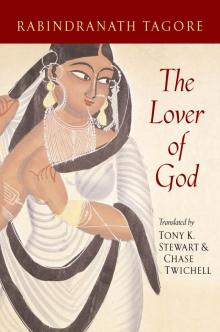 The Lover of God
The Lover of God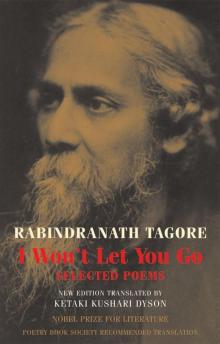 I Won't Let You Go: Selected Poems
I Won't Let You Go: Selected Poems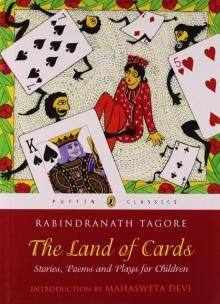 The Land of Cards: Stories, Poems, and Plays for Children
The Land of Cards: Stories, Poems, and Plays for Children The Tagore Omnibus, Volume One
The Tagore Omnibus, Volume One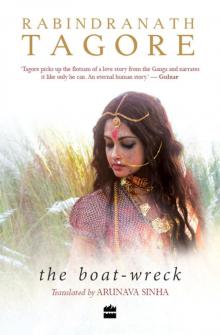 The Boat-wreck
The Boat-wreck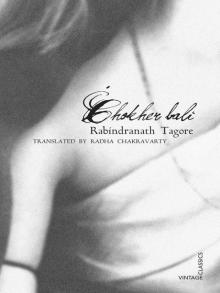 Chokher Bali
Chokher Bali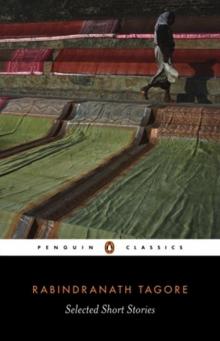 Selected Short Stories
Selected Short Stories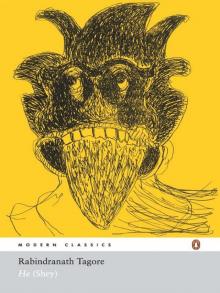 He (Shey)
He (Shey)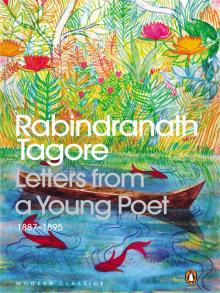 Letters From a Young Poet 1887 1895
Letters From a Young Poet 1887 1895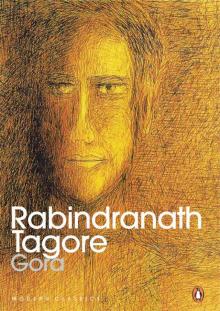 Gora
Gora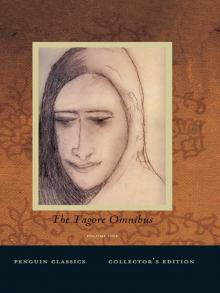 Tagore Omnibus, Volume 1
Tagore Omnibus, Volume 1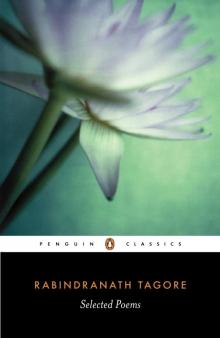 Selected Poems (Tagore, Rabindranath)
Selected Poems (Tagore, Rabindranath)